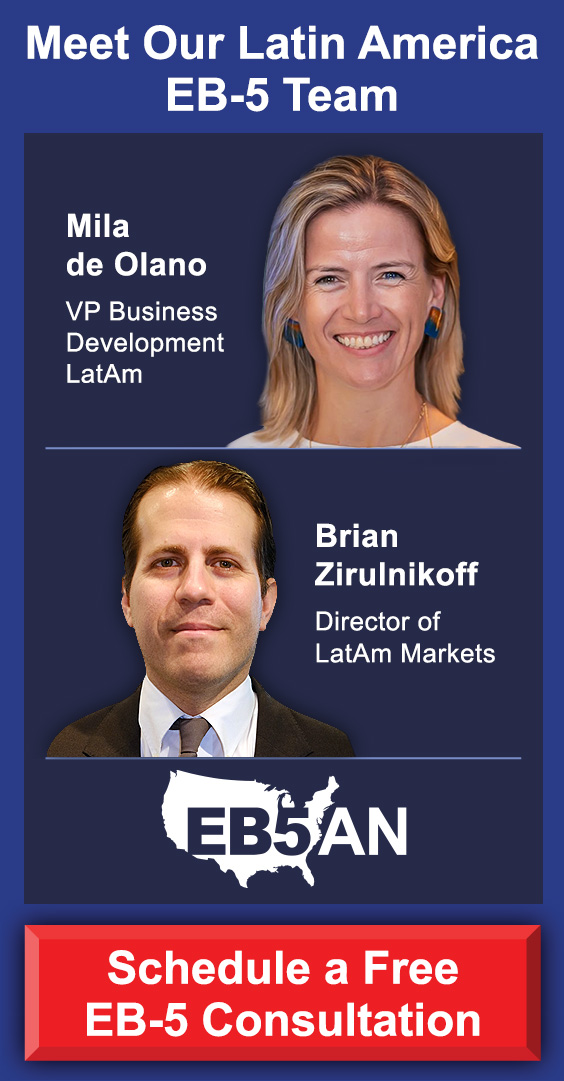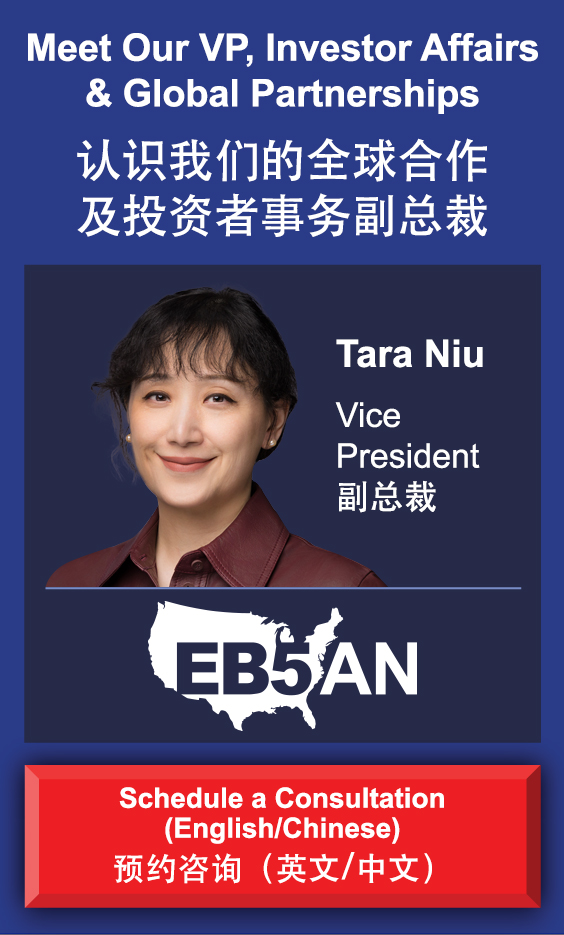Selecting an investment project is one of the most important decisions that a foreign national will make when applying for a visa under the EB-5 Immigrant Investor Program. This choice matters because some EB-5 investment categories are significantly oversubscribed, resulting in lengthy wait times for a U.S. Green Card.
Before you decide, you should understand what targeted employment areas are, including the differences between projects located in rural and high unemployment areas (urban TEAs). Each pathway offers potentially significant advantages and disadvantages.
However, applications for rural projects are usually adjudicated much faster. Most foreign investors who value greater stability, predictability, and processing speed will find rural projects to be the better choice.
In this article, we’ll explain what you need to know about EB-5 rural and urban projects, why a rural project is the best option for the typical investor, and where to go for help if you want to get Green Cards quickly and easily.
EB-5 Rural vs. Urban Projects: Differences at a Glance
What Are Rural and Urban EB-5 Projects?
Are EB-5 Rural or Urban Projects Better?
Find the Right EB-5 Project for You and Your Family With EB5AN
EB-5 Rural vs. Urban Projects: Differences at a Glance
Here are the main differences between these two types of EB-5 investment projects:
| Rural EB-5 Investment | Urban EB-5 Investment | |
| Defining Features | Investment in a project located outside a metropolitan statistical area (MSA) and not within a town/city with a population of more than 20,000. | Investment in a project located within an area with an unemployment rate that is at least 150% of the national average. |
| Percentage of Set-Aside Visas | 20% of EB-5 visas are specifically set aside for rural area investments each fiscal year. | 10% are set aside for high-unemployment TEAs; urban investments not in TEAs get no set-aside. |
| Processing Time | Generally faster, due to prioritization under the EB-5 Reform and Integrity Act of 2022. | Generally slower; non-priority processing applies. |
| Likelihood of Backlogs | Lower backlog risk due to visa set-asides and fewer applicants. | Higher backlog risk, especially for popular projects and countries with high demand. |
Let’s unpack what all this means and take a closer look at what’s involved with each of these categories.
What Are Rural and Urban EB-5 Projects?
The EB-5 Reform and Integrity Act of 2022 (RIA) created three set-aside visa categories (also called reserved visa categories) to encourage more investment in targeted employment areas (TEAs) that have greater needs for economic growth and job creation. Unlike a standard EB-5 project, which requires a minimum capital investment of $1,050,000, a TEA project is eligible for a discounted rate of $800,000.
The TEA categories are rural and high-unemployment projects (also called “urban”). Although they are technically not located in targeted employment areas, certain designated public infrastructure projects are eligible for the same lower investment rate of $800,000.
Rural Projects
Rural TEA projects get 20% of the EB-5 visa quota each fiscal year.
A rural TEA project is located outside a metropolitan statistical area and beyond the outer boundary of a city or town with a population of 20,000 or more, based on the most recent decennial census.
Urban Projects
High-unemployment urban TEA projects get 10% of the annual visa quota.
A high-unemployment TEA project is defined by where in a given census tract the commercial enterprise operates. To qualify, the unemployment rate inside of the specified area should be at least 150% of the U.S. national average unemployment rate.
Infrastructure Projects
Certain public infrastructure projects get 2% of the visa quota.
However, not every infrastructure project qualifies; it must be designated as such by the U.S. government.
Sometimes there are more than enough visas in a given EB-5 set-aside visa category to accommodate all applicants, and the quota will remain current for an extended period. Unused reserved visas (sometimes called “rollover visas”) will carry over in their reserved category for one year. If they are still unused after that additional year, they will be reallocated to the unreserved visa pool.
Are EB-5 Rural or Urban Projects Better?
While foreign investors tend to improve their chances of getting an EB-5 Green Card promptly by applying under one of the immigrant visa set asides, one of these options is better for the majority of applicants.
Rural Projects Make the Most Sense Most of the Time
Rural TEA projects are the better choice for most EB-5 foreign investors, as United States Citizenship and Immigration Services (USCIS) usually processes applications for these much faster than urban petitions.
They are particularly beneficial for applicants from countries like China and India, where the demand for available visas consistently exceeds supply. USCIS imposes country caps on how many visas it issues, so that no country receives more than 7% of the total EB-5 visa allocation each year.
Investors from high-demand countries who choose projects in rural areas will have a major advantage in obtaining immigrant visas. The urban set-aside category is more likely to get oversubscribed for such investors.
For a while, the magnitude of the difference in approvals between categories was unclear because of limited data. However, we now know the extent of the preferential treatment that rural TEA project applications get, thanks to findings revealed by a recent Freedom of Information Act request. According to this new data, USCIS has approved about 97% of both rural and urban TEA I-526Es during the past several years. However, it processed far more of the investor petitions for rural TEAs.
Key Point: What Is Form I-526/I-526E?
Submitting an immigration petition—either Form I-526 or Form I-526E—is a key part of the EB-5 application process. Filing it marks the point when an individual officially applies to the EB-5 program. It demonstrates that the investor has committed the required capital to a new commercial enterprise that will create jobs for American workers.
Form I-526 is the immigration petition for a standalone investor who is making a direct investment in a new commercial enterprise.
Form I-526E is the immigration petition for a regional center investor, who is pooling funds with others via a USCIS-approved regional center.
Out of the 9,878 I-526E petitions submitted to USCIS between April 1, 2022 and January 31, 2025, 53% were for urban projects and 44% were for rural projects. USCIS approved three times as many of the rural applications.
And from February 2023 until May 2025, USCIS made decisions on 74 urban project petitions. However, it made decisions on 967 rural petitions. USCIS adjudicated 13 times as many rural as urban petitions, even though more urban petitions were submitted during that period.
USCIS processes rural TEA category petitions relatively quickly. In almost every case, it has adjudicated a rural TEA application within a year of receiving it. The number of rural I-526E approvals also surged during the first half of 2025.
It’s clear how many investors benefit substantially from rural priority processing. From the adjudication statistics, we can see that USCIS decides on rural I-526Es much faster than I-526E petitions filed under the urban high unemployment category. It also approves the vast majority of those rural petitions.
When an Urban Project Makes More Sense
However, individual circumstances and projects vary. For some investors, an urban TEA category project might make more sense if it is located in an area that is critical to their immigration plans and if financial goals are paramount.
Some investors may have a strong preference for a particular project in an urban location because of personal preferences, potential for higher returns, or other reasons. Investors from low-demand countries that do not face much backlog risk may also be more inclined to explore high-unemployment TEA project options.
Key Point: Concurrent Filing Is Another Way to Speed Up Approval Time
Prospective EB-5 investors who are already physically present in the United States can save time in completing the EB-5 application process through concurrent filing. Concurrent filing happens when an investor files their Form I-526E immigration petition at the same time as their Form I-485 petition to change their immigration status.
Note that this is only possible for those who are already in the United States on a valid nonimmigrant visa; applicants who are abroad must undergo consular processing and submit Form DS-260 (instead of Form I-485) to a U.S. embassy or consulate in their home country. A visa must also be immediately available for applicants to be able to benefit from this option.
Find the Right EB-5 Project for You and Your Family With EB5AN
The typical EB-5 investor will get their immigration petition approved faster by selecting a strong rural TEA project.
However, a one-size-fits-all approach doesn’t work for every applicant. It can be tricky to find the right project for your individual circumstances and immigration goals. Choosing between urban TEA investments and rural TEA investments is just one among many decisions that EB-5 investors have to make before they and their eligible family members are approved for lawful permanent residency in the United States.
Making informed decisions is easier when you have experienced professionals on your side. An expert team will also help you get your paperwork filled out correctly and approved by USCIS in a timely manner.
Out of more than 500 regional centers that were operating in the United States between 2022 and 2024, there’s one that managed to secure 20% of the total number of approved rural I-526E petitions: EB5AN.
We can answer all of your questions, whether they concern how to pick the right new commercial enterprise or key considerations in fulfilling job creation requirements. Potential investors should be sure to consult with an immigration attorney as well.
To learn more about becoming a U.S. Green Card holder under the EB-5 Immigrant Investor Program, book a free call with us today.











